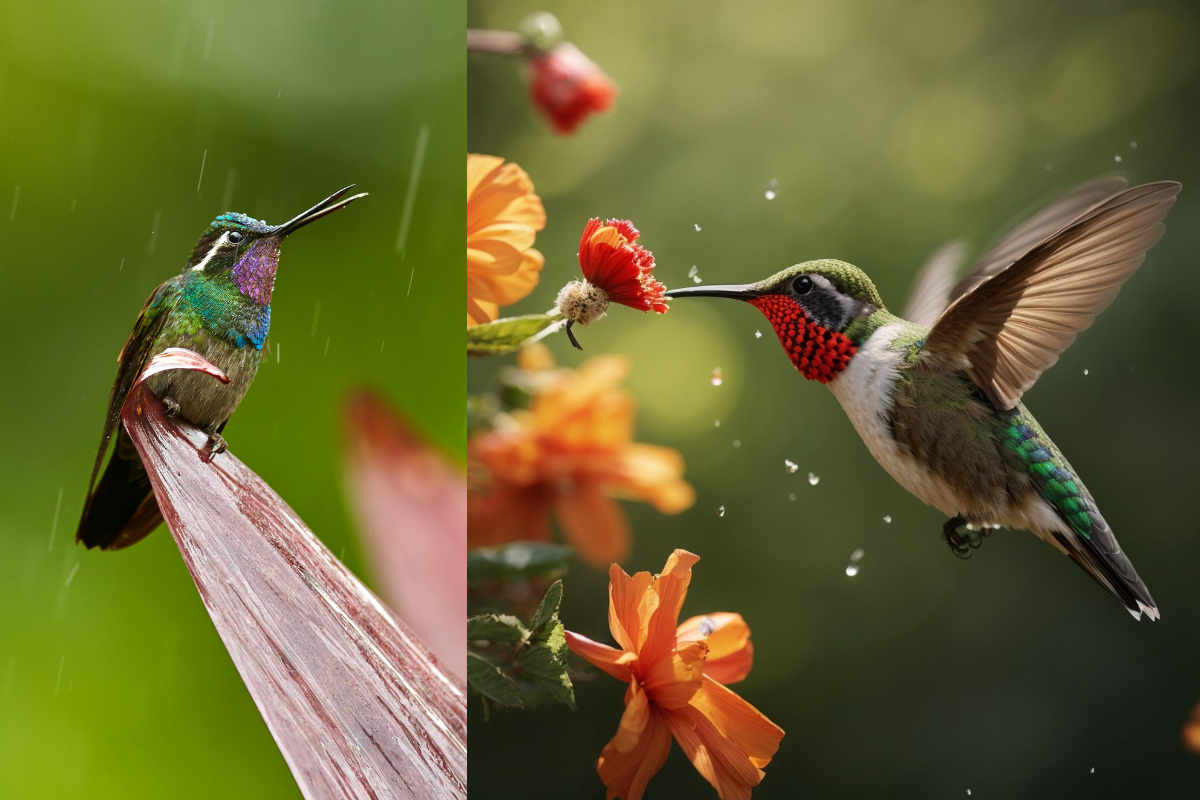Hummingbirds are extraordinary creatures that captivate us with their small size and incredible flying abilities. In this article, we will explore six intriguing facts about hummingbird sizes that will deepen your appreciation for these beautiful birds.
How Small Are Hummingbirds Compared to Other Birds?
Hummingbirds hold the title for being the smallest birds in the world. The bee hummingbird, found in Cuba, measures a mere 2 inches from bill to tail feathers. To put this into perspective, a bee hummingbird is about the size of a large bumblebee. While most hummingbirds are larger than the bee hummingbird, they are still remarkably tiny compared to other birds. On average, hummingbirds range from 3 to 5 inches in length. In comparison, sparrows typically measure 6 to 7 inches, while crows can reach up to 2 feet in length. Therefore, hummingbirds are approximately 1/5 the size of common backyard birds. Their lightweight bodies enable them to effortlessly hover as they sip nectar from flowers.
Why Are Hummingbirds So Small?
The diminutive size of hummingbirds is an evolutionary adaptation that allows them to thrive on their diet of sugary nectar. Their small size is perfectly suited for nectar-feeding due to several reasons:
- High metabolisms: Hummingbirds have incredibly fast heart rates and metabolisms, which provide the energy required for their hovering flight. Their lightweight bodies are necessary to sustain such a fast heart rate.
- Energy efficiency: Smaller birds require less energy to power their flight. Hummingbirds can thrive on the limited calories found in nectar, while larger birds would quickly starve.
- Access to nectar: Hummingbirds possess slender beaks and long tongues that are specifically designed to reach the nectar at the base of long, tubular flowers. Their petite size allows them to access nectar that other animals cannot reach.
Therefore, their small size is perfectly adapted to their high-energy lifestyle and unique food source.
How Does Wing Size Relate to Their Tininess?
Despite their tiny bodies, hummingbirds have relatively long wings compared to their overall size. These long, narrow wings enable them to beat up to 200 times per second, granting them specialized flight abilities such as hovering and flying backwards. If you were to compare a hummingbird skeleton to a pigeon skeleton, you would notice that the hummingbird’s bones are miniature versions, but the wing spans would be almost identical. While their overall body size is small, their wings make up around 1/3 of their total length. This wing length allows them to generate the lift and power necessary for their unique flight techniques.
Do Male and Female Hummingbirds Differ in Size?
In most bird species, females are larger than males. However, in hummingbirds, males are slightly larger, making them an exception to this general rule. Males are typically 5-10% bigger than females. This size difference is most pronounced during the breeding season when males engage in aerial displays to attract potential mates. The larger size and brighter feathers give them a competitive edge. At other times, it may be challenging to distinguish between male and female hummingbirds based on size alone. So, if you see two hummingbirds chasing each other, the slightly bigger one is likely the male.
How Does a Hummingbird’s Weight Compare to Other Objects?
The weight of hummingbirds is so minuscule that it’s difficult to comprehend. On average, they weigh about the same as two to three US pennies, which is approximately 2 to 6 grams. To put it into perspective, this is lighter than a single metal paperclip, a penny, or an AA battery. Hummingbirds are thousands of times lighter than humans. Their lightweight nature allows them to achieve remarkable feats of flight that would be impossible for larger birds.
Do Hummingbird Species Vary in Size?
There are over 350 species of hummingbirds, and while they vary slightly in size, most fall within the range of 2 to 6 grams. The smallest hummingbird species is the bee hummingbird, weighing around 2 grams. On the other end of the spectrum, the giant hummingbird of South America is the largest, measuring up to 8.5 inches and weighing 20 grams. This species is the only hummingbird capable of perching on branches without hovering. Other larger species include the white-necked jacobin of Brazil, weighing 11 grams, and the long-billed starthroat of Mexico, weighing over 12 grams. However, the majority of hummingbird species maintain a consistently tiny stature across different types.
The Bottom Line
Hummingbirds possess astonishing flight skills and enormous appetites despite their tiny stature. Their small size is a result of evolution, perfectly adapted to their nectar-feeding lifestyle. These captivating little birds make a big impression with their unique characteristics. Next time you spot a hummingbird, take a moment to appreciate their remarkable abilities.
